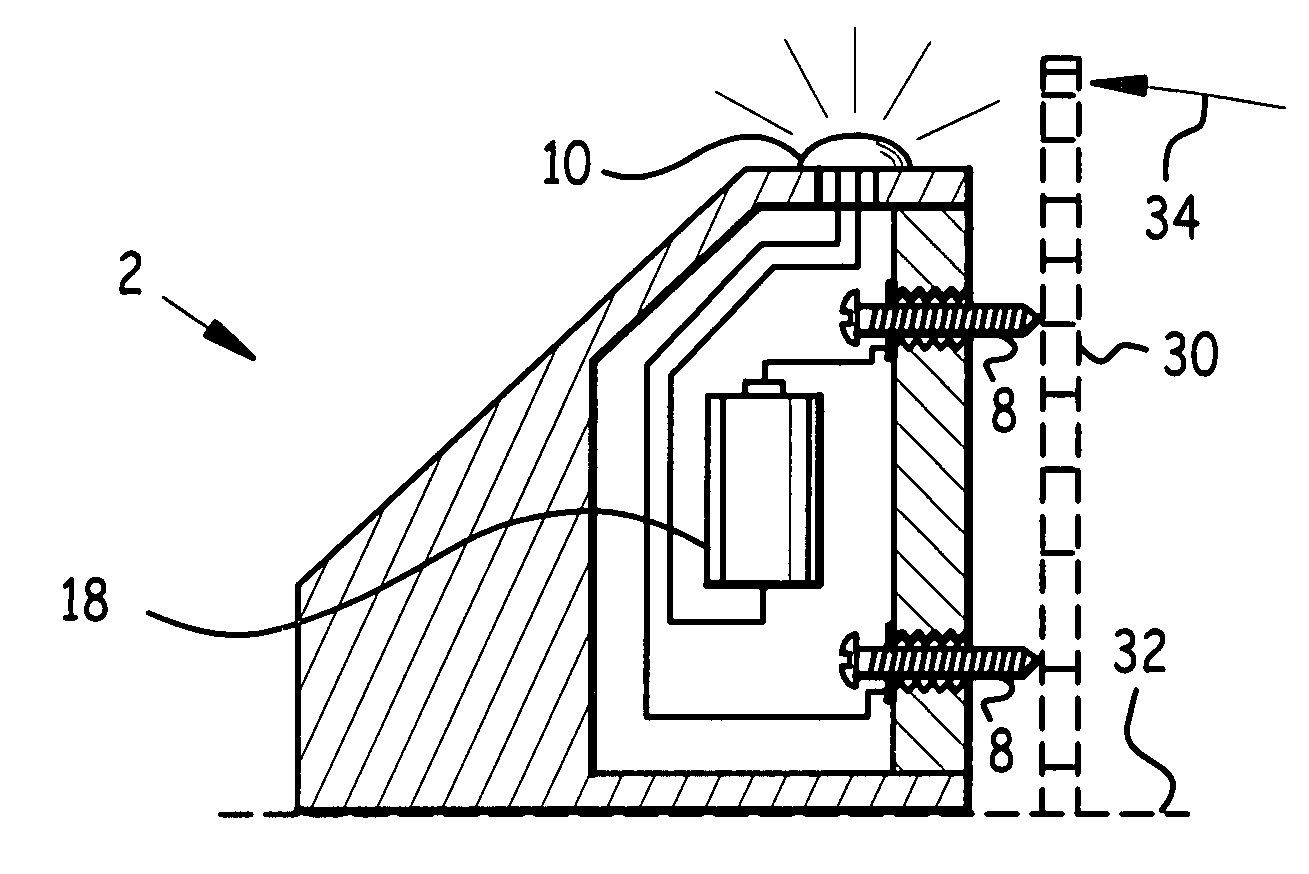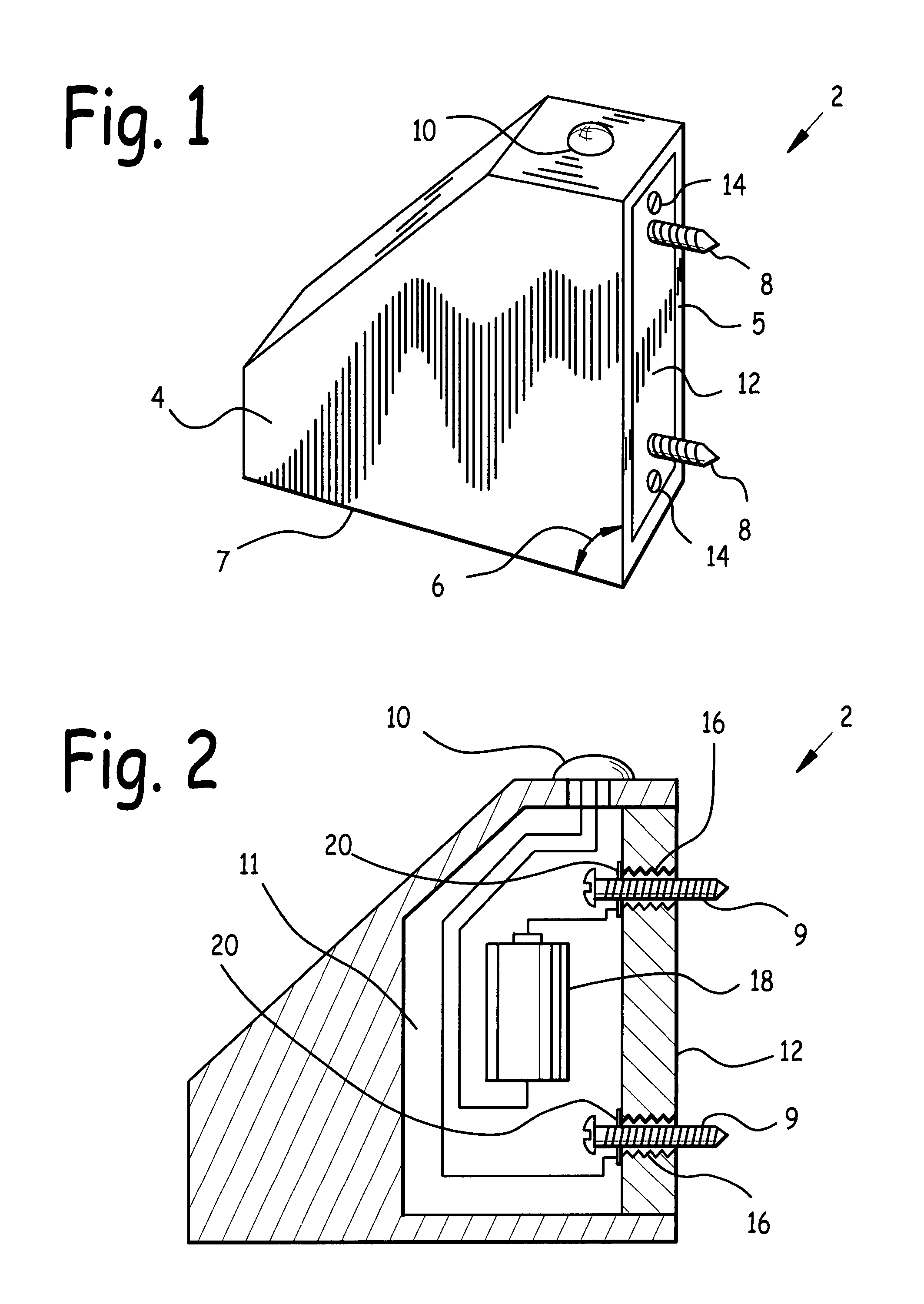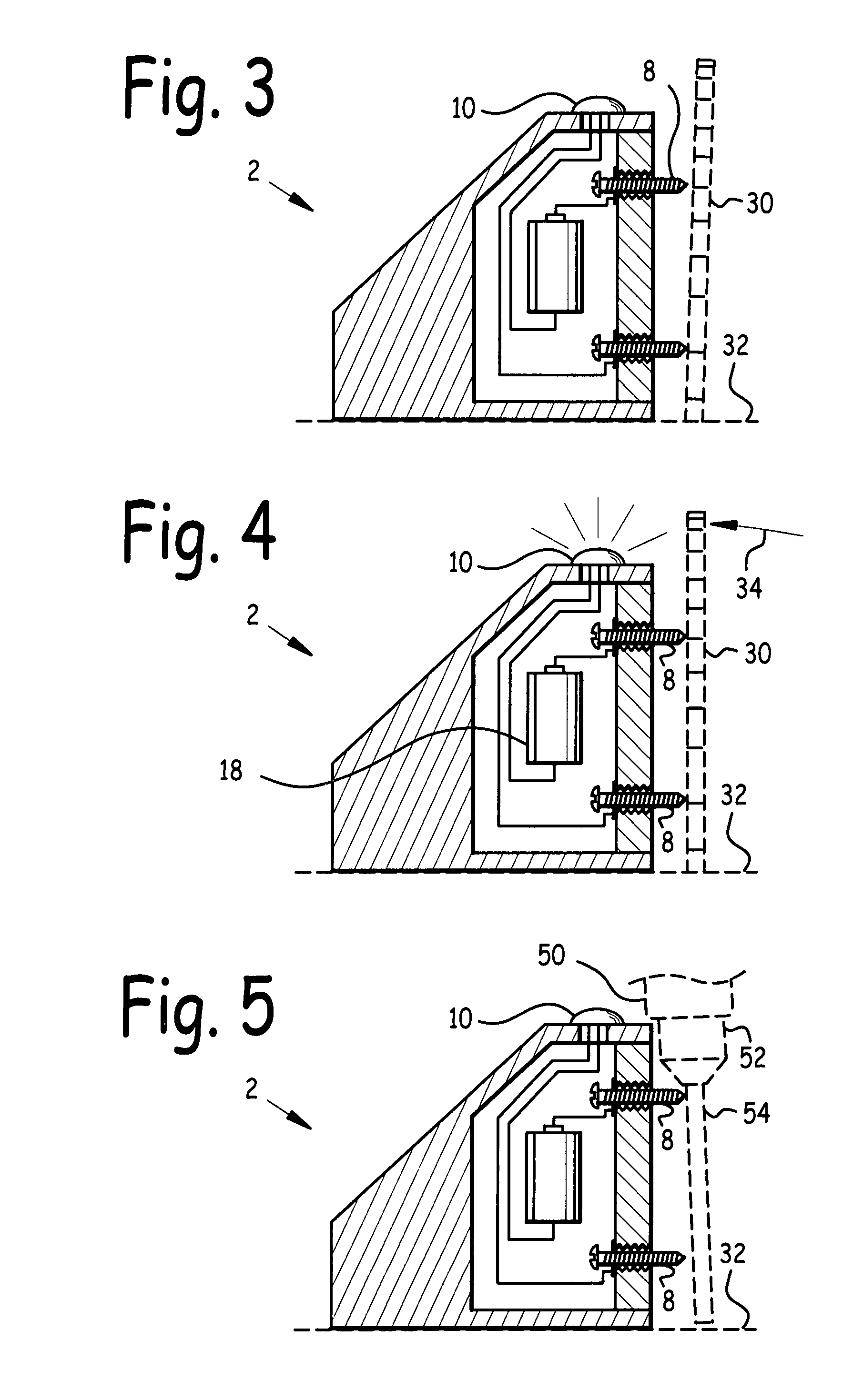Angle gauge and method of use
a technology of angle gauge and angle gauge, applied in the field of gauges, can solve the problems of time and cost saving, and achieve the effects of saving time and cost, increasing accuracy, and being easy to calibra
- Summary
- Abstract
- Description
- Claims
- Application Information
AI Technical Summary
Benefits of technology
Problems solved by technology
Method used
Image
Examples
Embodiment Construction
[0024]Referring now to FIG. 1 we observe a front quarter elevated view of angle gauge 2. FIG. 2 is a side cross-sectional view of angle gauge 2. Angle gauge 2 incorporates two electrically conductive probes 8, attached to housing 4. At least one probe 8 is adjustably attached to housing 4, so that angle gauge 2 can be calibrated as illustrated in FIGS. 6 and 7.
[0025]Housing 4 incorporates housing probe wall 5 and housing foot 7. In the preferred embodiment, housing probe wall 5 and housing foot 7 were flat surfaces. Angle gauge 6 is the angle between housing probe wall 5 and housing foot 7, and is substantially equal to the predetermined angle which angle gauge 2 is sized to gauge. In FIGS. 1-7 gauge angle 6 is 90 degrees.
[0026]Light 10 and battery 18 are connected in series between electrically conductive probes 8. Thus, when probes 8 are electrically connected, light 10 illuminates as indicated in FIGS. 4 and 7.
[0027]As may be observed in FIG. 2, in the preferred embodiment at lea...
PUM
 Login to View More
Login to View More Abstract
Description
Claims
Application Information
 Login to View More
Login to View More - R&D
- Intellectual Property
- Life Sciences
- Materials
- Tech Scout
- Unparalleled Data Quality
- Higher Quality Content
- 60% Fewer Hallucinations
Browse by: Latest US Patents, China's latest patents, Technical Efficacy Thesaurus, Application Domain, Technology Topic, Popular Technical Reports.
© 2025 PatSnap. All rights reserved.Legal|Privacy policy|Modern Slavery Act Transparency Statement|Sitemap|About US| Contact US: help@patsnap.com



